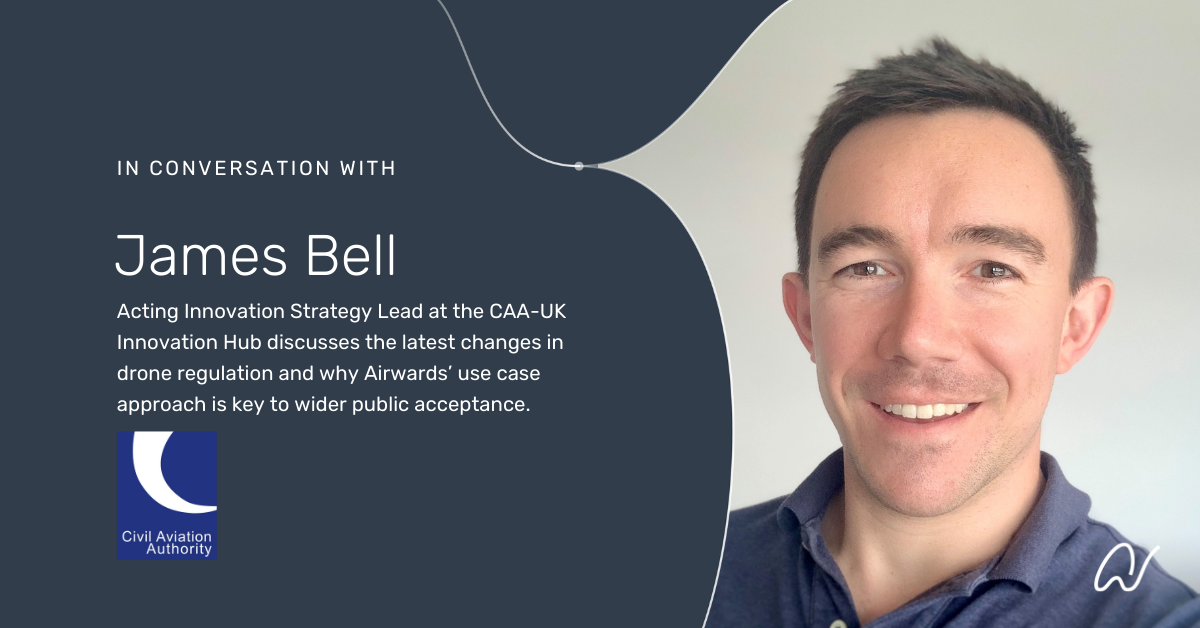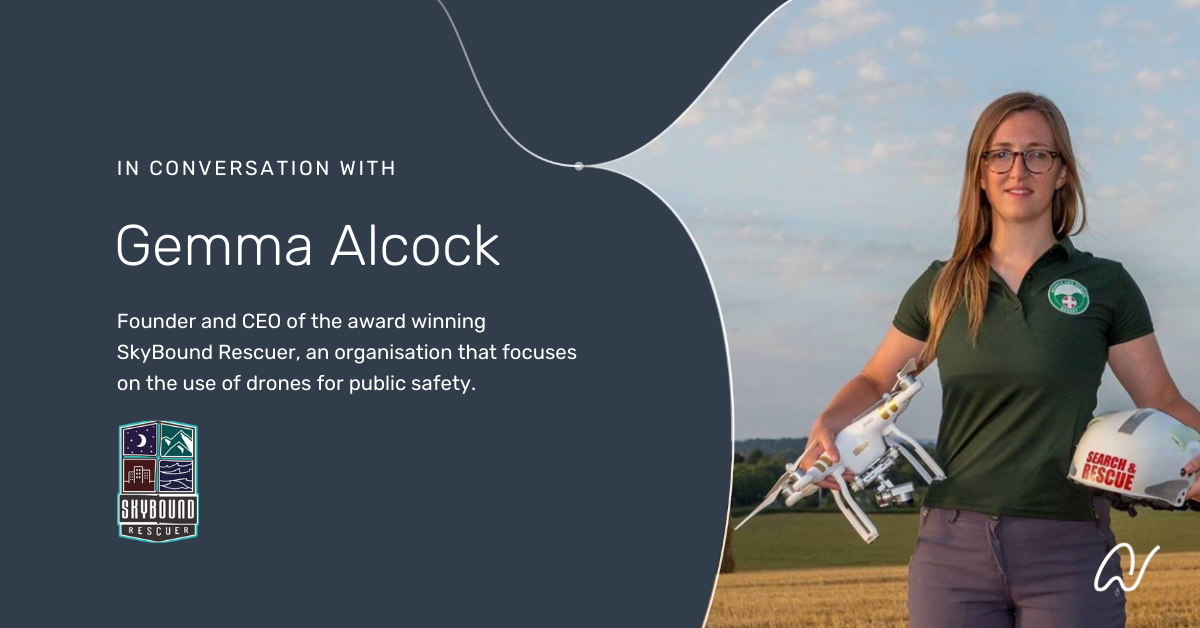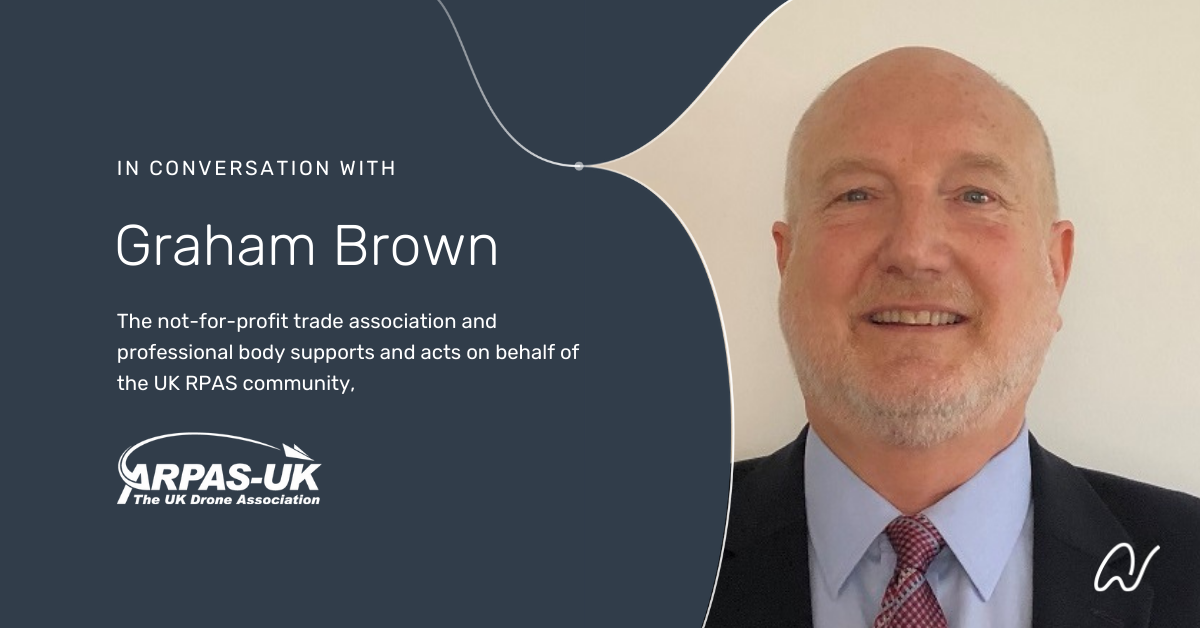In Conversation With
Each week, Airwards chats to someone in the drone industry doing incredible work. We uncover what they do, what makes them tick, where they see the drone industry headed, and discuss positive drone use.
At Airwards, we don’t just love drone technology. We’re appreciators of all things creative and innovative - which is why we sat down with designer Ryan Lee, who created the Airwards branding. Ryan is a travel junkie, newbie drone pilot and multi-disciplinary creative.
Trained as a Graphic Designer, Ryan specialises in Information Design, subscribing to the belief that form follows function. Alongside his new-found passion for drones, Ryan shares his inspirations behind the Airwards brand and what type of projects he hopes to see showcased in this year’s awards.
“Drone flight paths are always something planned (whether physically or mentally) prior to safe and organised drone flying. This was ultimately what Richard and I wanted to represent in the Airwards brand, and particularly the logo. Taking the idea of drone flight paths further, we wanted to bring to life the 3D aspect of flying, where altitude also had to be considered beyond the coordinates. This helped to form the foundations of a few subtle 3D elements in the brand.”
1 | What does it mean to be a multi-disciplinary designer?
In a nutshell, this means I design across a broad range of creative fields. This might be graphic design, information design, digital design, video editing or animations. I have a passion for typography in particular, from the micro aspect of the design of each individual letter, to the macro view of how each line of text interacts with each other. Ultimately, whatever design output, I believe that putting the user in the centre of every project is key in delivering a thoughtful design – form follows function.
2 | What experience have you had with drones?
I recently took a career break and went travelling to pursue my passion for snowboarding and winter sports. Something I’m now very glad I did! During this time, I continued exploring personal projects, including photography, videography - and learning to fly a drone, a new area of creativity for me.
I currently fly the DJI Mavic Mini which I find is a really good, beginner-friendly, entry-level drone and perfect for travelling with. I particularly enjoy taking aerial perspectives in unique places like snow covered mountains and volcanoes at sunrise. When I was travelling in Japan, I had to learn fast about safety, taking the different rules and regulations into consideration. And to be honest, I learnt that flying a drone can be quite challenging as there is a lot of risk management involved! You have to think about a number of aspects that could affect the drone’s flight and ensure you’re always going to get it back safely.
3 | You’ve designed the branding for Airwards. How did drones inspire your creations?
Richard (Airwards’ founder) shared his idea for the awards with me back in 2019 and I immediately recognised the potential as the first awards scheme of its kind for the drone industry. I knew I had to be involved! We spent many long days together early on, concepting the Airwards identity you’ll now find throughout the website, social pages and documents.
Over the course of about four months, we worked on everything from the naming and brand direction, what Airwards means, its identity, purpose, characteristics and how it could best showcase drone companies and projects. This information formed the brand foundation of Airwards. At the time I was already immersed in the world of drones, as I was coincidentally researching which drone to purchase myself. In addition, my recent understanding of the fundamentals of flying a drone - namely, the regulations, conditions of flying and aircraft awareness - definitely inspired the designs. I learnt there really is no limit to what you can do with drones - if conducted in a controlled and responsible manner, respecting local rules and industry regulations.
Drone flight paths are always something planned (whether physically or mentally) prior to safe and organised drone flying. This was ultimately what Richard and I wanted to represent in the Airwards brand, and particularly the logo. Taking the idea of drone flight paths further, we wanted to bring to life the 3D aspect of flying, where altitude also had to be considered beyond the coordinates. This helped to form the foundations of a few subtle 3D elements in the brand, as we conceptualised the various brand touchpoints. And thus the Airwards branding was born.
4 | As a relative newbie to drones, what is your opinion of this technology?
Absolutely fascinating. It has so many different potentials! For starters, it feels like drones have transcended their origins of hobbyists, photographers and the film industry. From my understanding, drones now utilise and benefit from the core aspects of videography by applying them in a variety of vital industries. For example, taking new applications and out-of-the-box thinking and using them in search and rescue, surveying, agriculture and a number of other industries.
Every day I’m learning how drones have helped companies do incredible things, from emergency services monitoring fires or oil companies inspecting pipelines. It feels like drone technology has really evolved into a positive life-enhancing tool, and I believe this is a really good thing to see. The possibilities and opportunities are endless.
5 | What projects would you like to see showcased in the inaugural awards scheme?
Personally, what I’d particularly like to see is more examples of drones for good. That is to say, drone use going beyond the hobbyist or commercial aspects for good causes. I’d love to see how they’re beneficial in disaster events, saving lives, or helping the police catch criminals. Drones have a few big benefits over scrambling helicopters, and thermal imagery can potentially be used to save lives, so I hope to see projects in those spaces.
I’d also like to highlight drones’ potential in bringing new perspectives to life through educational purposes - informing human understanding of how things have come together in areas of heritage or archaeology. So not just for future prevention, but also as a tool for studying landscapes with the perspective of avoiding future flooding, for example. This is how we can use it for good moral deeds.
About Ryan
Ryan is a multi-disciplinary creative who is trained as a Graphic Designer and specialises in Information Design. He focuses on creating seamless user experiences and making sense of information. He’s a massive foodie, newbie drone pilot and loves documenting travel experiences with photography and film.
Connect with Ryan on LinkedIn and visit his Instagram for more information.

















